Physics

Some 80-90 years ago, an unknown Californian guy named George A. Linhart, unlike A. Einstein, P. Debye, M. Planck and W. Nernst, has managed to derive a very simple, but ultimately general mathematical formula for heat capacity vs. temperature from the fundamental thermodynamical principles, using what we would nowadays dub a “Bayesian approach to probability”. Moreover, he has successfully applied his result to fit the experimental data for diverse substances in their solid state in a rather broad temperature range. Nevertheless, Linhart’s work was undeservedly forgotten, although it does…
Is cosmic inflation faster than the speed of light?
Cosmic inflation already works if the universe's volume doubles a mere 260 times. Every doubling takes 109 fundamental time steps tPlanck. If we were to imagine fundamental volumes, microscopic boxes of space multiplying like bacteria, every generation has 109 fundamental time units to reproduce just once. 109 human heartbeats are equivalent to about 109/(60*60*24*365) = 30 years. Not exactly bunny speed. Moreover, the duration of cosmic inflation (Δt ~ treheat) could have been much longer than we assumed, and then “30 years” would turn into…
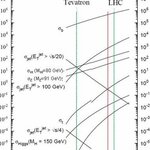
On Friday evening I was in Tesero, where a crowd of 150 interested laypersons attended my talk on particle physics, organized by the very active Gruppo Astrofili Fiemme. There, among other things, I discussed the challenge that is on between the Fermilab experiments in the United States and the CERN experiments in Europe. I will discuss elsewhere the successful evening; here I just want to show the status of data collection by the two challengers.
The quantity that one wants to have a look at when we discuss data collection at a particle collider is integrated luminosity. Luminosity is a…
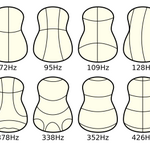
When I was in my late teens, my father (a chemical engineer) took an interest in quantum mechanics. Two words from his conversation at that time stuck in my mind, namely Hamiltonian and eigenfunction. The former was almost certainly due to the Scottish part of my ancestry, but with the latter it was the word itself.
Indeed, it at first sight seems quite an intimidating word, along with its relatives eigenvalues and eigenvector. Fear not – I will show you that it despite its fearsome bark, it has a very soft bite.
I will start at the kitchen sink, just as the spaceship…
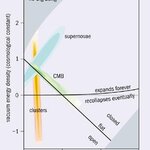
Coincidences in fundamental physics, sometimes in the form of so called “fine tunings”; what are they? Generally speaking, some parameter happens to have a value very close to some other interesting number, and we do not see why. Often, some totally unrelated parameters are equal, at least as far as we can tell given measurement accuracy and finite resolution.
The Hubble constant for example describes the speed of the expansion of the universe. Its value is H = 2.3×10-18 Hz, which is awfully close to 1 divided by the age of the universe, which is 13.8 billion years. Coincidence? Radio…
During cosmic inflation, the universe's volume doubles only about 260 times. Not much, but still, if this happens during an amazingly short time duration Δt, it would be an amazingly fast process. Lets see about this. The duration of cosmic inflation Δt is constrained by particle physics. Reheating, which is the end of inflation, also called “Big Bang”, must happen before the so called electro-weak symmetry breaks at around 10-12 seconds in cosmic time.
Cosmic time is here back calculated and expressed relative to a certain, convenient time scale. It does not imply a metaphysical t = 0 moment…
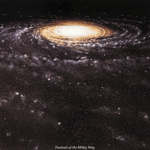
A young fisherman in a distant past looks across the sea and ponders: "What an unimaginably big stretch of water!" He has no idea where it ends or even if it ends. But he knows one thing: over time spans of many years the rainfall into the sea adds up to a lot of water, and therefore the sea must be rising. This means that in a number of generations the sea will inevitably flood the lands, making the world an inhabitable place. But it also means that in the past the sea must have been much shallower. Too shallow for fish to thrive in. An inevitable conclusion forces itself upon our young…

This monument is situated just opposite Sudanlage 6, which housed world famous lineage of Institute of Plant Nutrition which was once headed by Professor Dr Justus von Liebig, in Giessen, Germany, subsequnelty Professors of great eminence The University was given his name. Professor Dr Wilhelm Conrad Rontgen (1845-1923) was Professor of Physics at the the University of Giessen ( now Justus von Liebig Universitat Giessen, Germany named after Justus von Liebig) I always saw this monument from our lab or to be more precise lab of Professor Dr Karl-Hermann…

A long time ago (≈1975) I was involved in establishing a world standard for the measurement of the Optical Transfer Function (OTF). It is better known as its modulus, the Modulation Transfer Function (MTF). The OTF combines the MTF with the Phase Transfer Function (PTF). The OTF is a two dimensional Fourier transform of the Point Spread Function (PTF). Thus, it is a two dimensional frequency characteristic used for qualifying imaging devices and chains of imaging devices.
Since the image of a point contains very little energy, the OTF is measured by analyzing the Line Spread Function (LSF).…
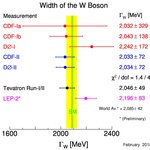
Being still in the middle of a rather long vacation (now in the Italian eastern alps), my blogging power is limited. So today I will just offer you some thoughts on the recent measurements of a fundamental parameter of the Standard Model called "W boson width".
The W boson, like any unstable subatomic particle, has a very short lifetime, which depends on the strength of its couplings to lighter particles, on its own mass (generally the heavier a particle is, the faster is its disintegration), and on the availability of lighter bodies into which to decay without breaking any fundamental rule…